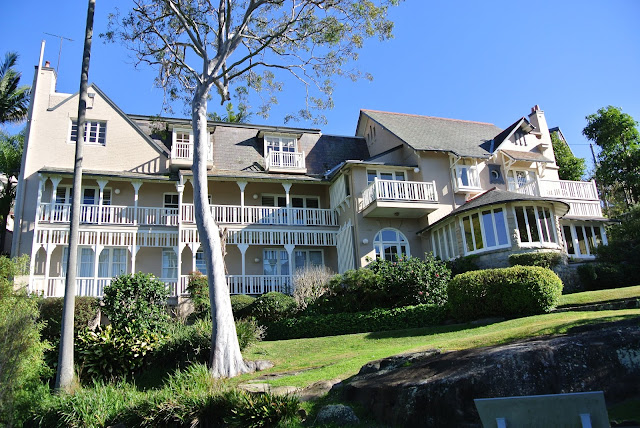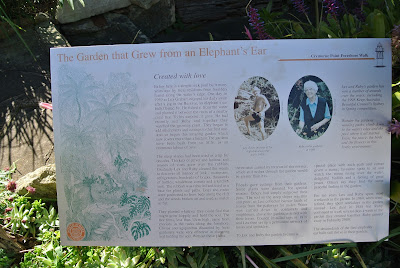A walk along the Cremorne foreshore features homes built on and into sandstone tiered up the slopes. The mellow golden sandstone forms solid house foundations and arch features for windows and doors. And, garden walls and edges are built from sandstone. This building was designed by J. Burcham Clamp, who lived in "The Laurels", originally two houses built in 1907, but since linked together. The beautiful homes here overlook a natural mix of tumbling vegetation, rock strewn shore, shallow waters along the Reserve edge and further, views across the harbour waters to Mosman. The smaller tree is actually an Agave Americana (Century Plant, Maquey)"flower". It blooms only when the plant is 15 years or older. These buildings represent the finest of twentieth century Australian suburban architecture, and comprise residential flats, houses and guest houses. The Cremorne Foreshore Walk is a popular with joggers, and follows the water for many kilometres



